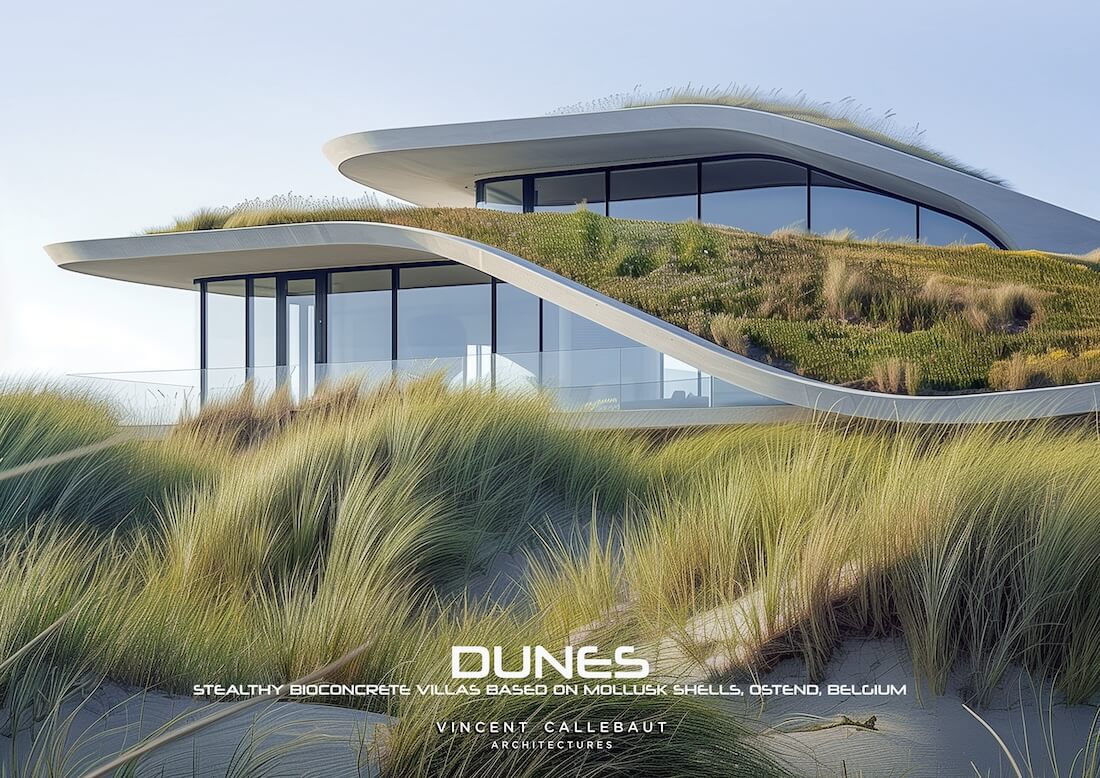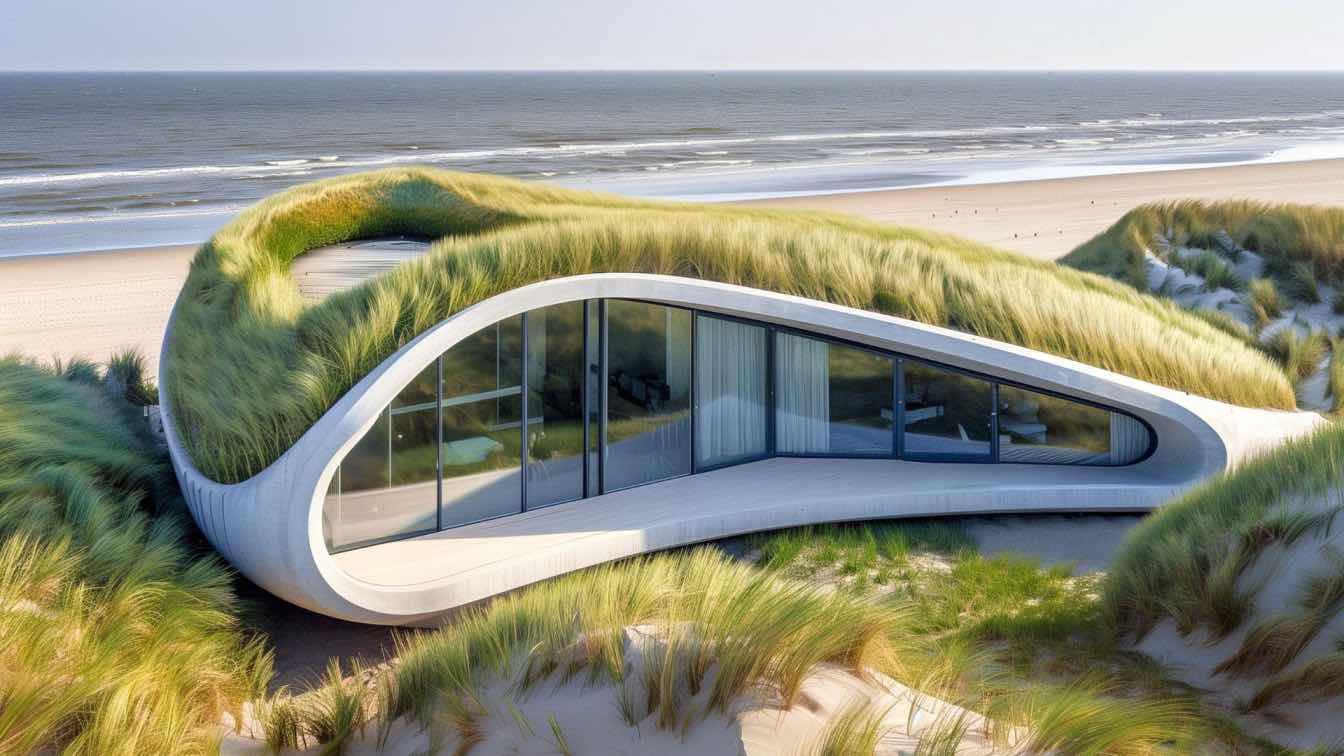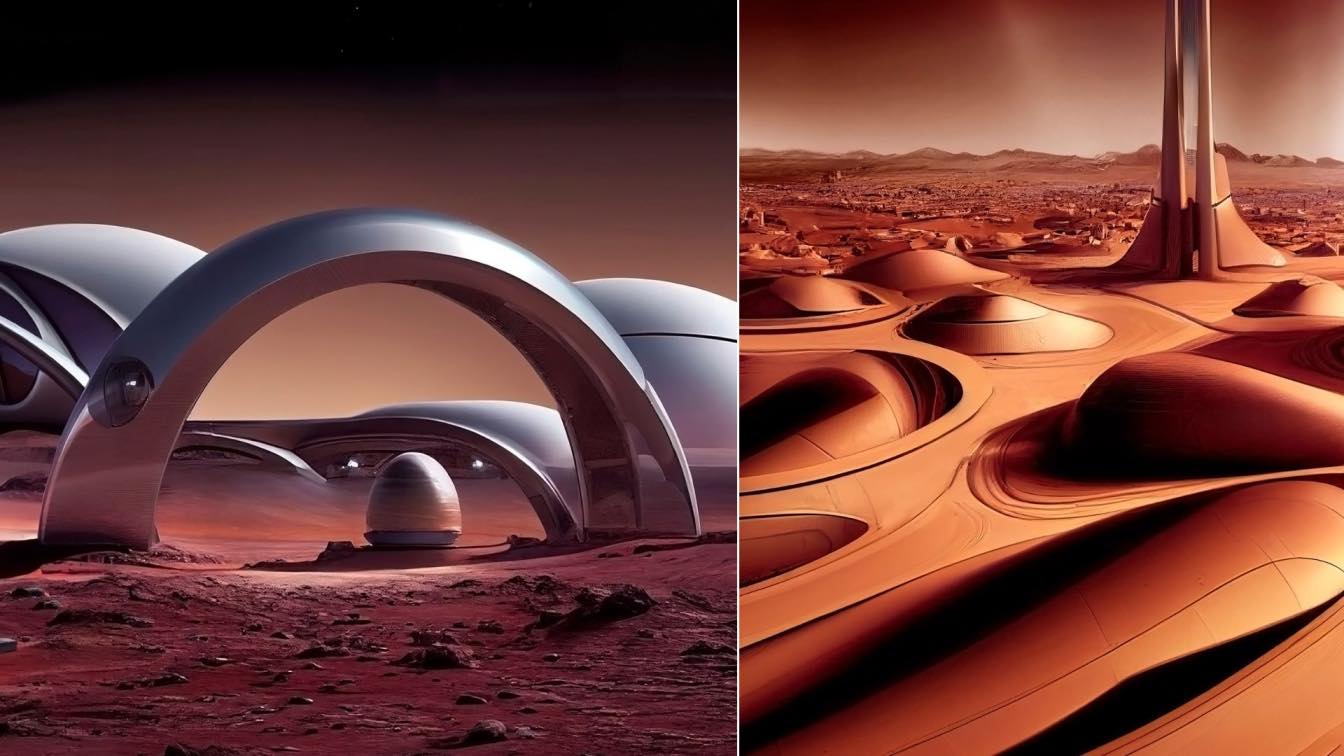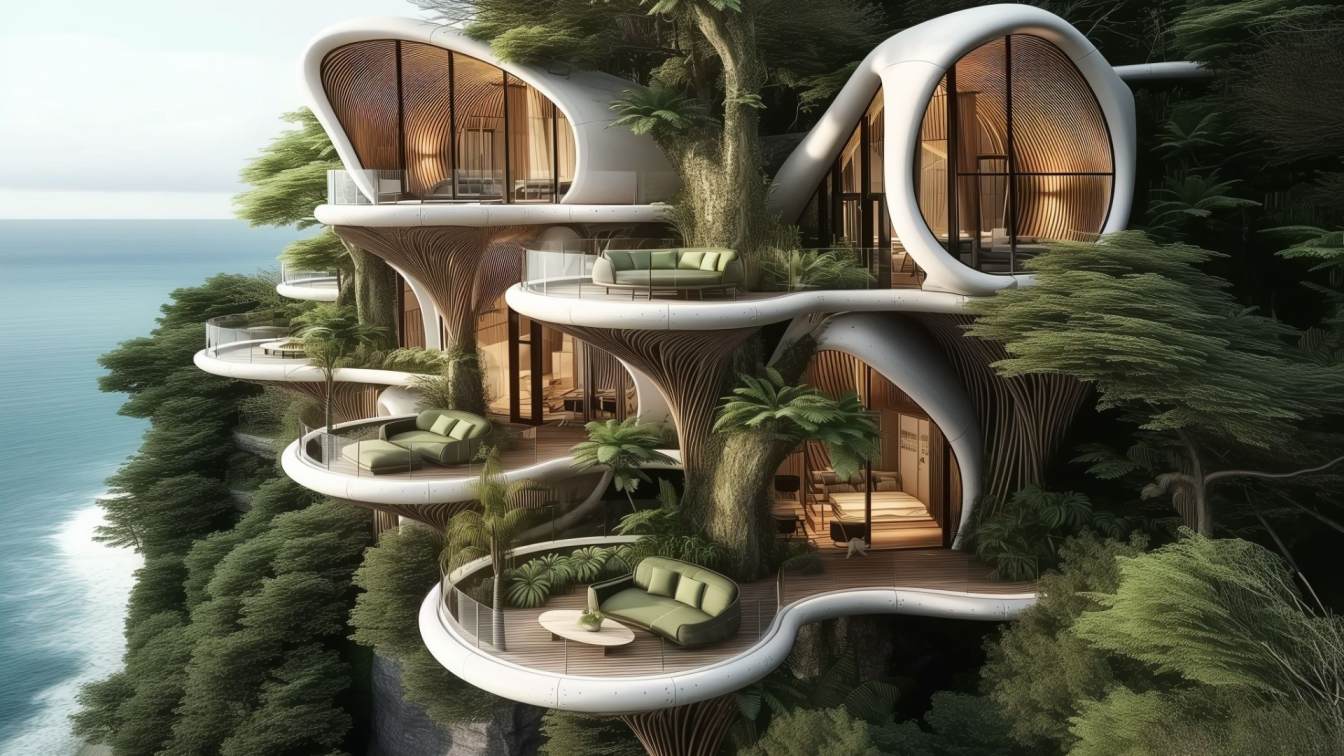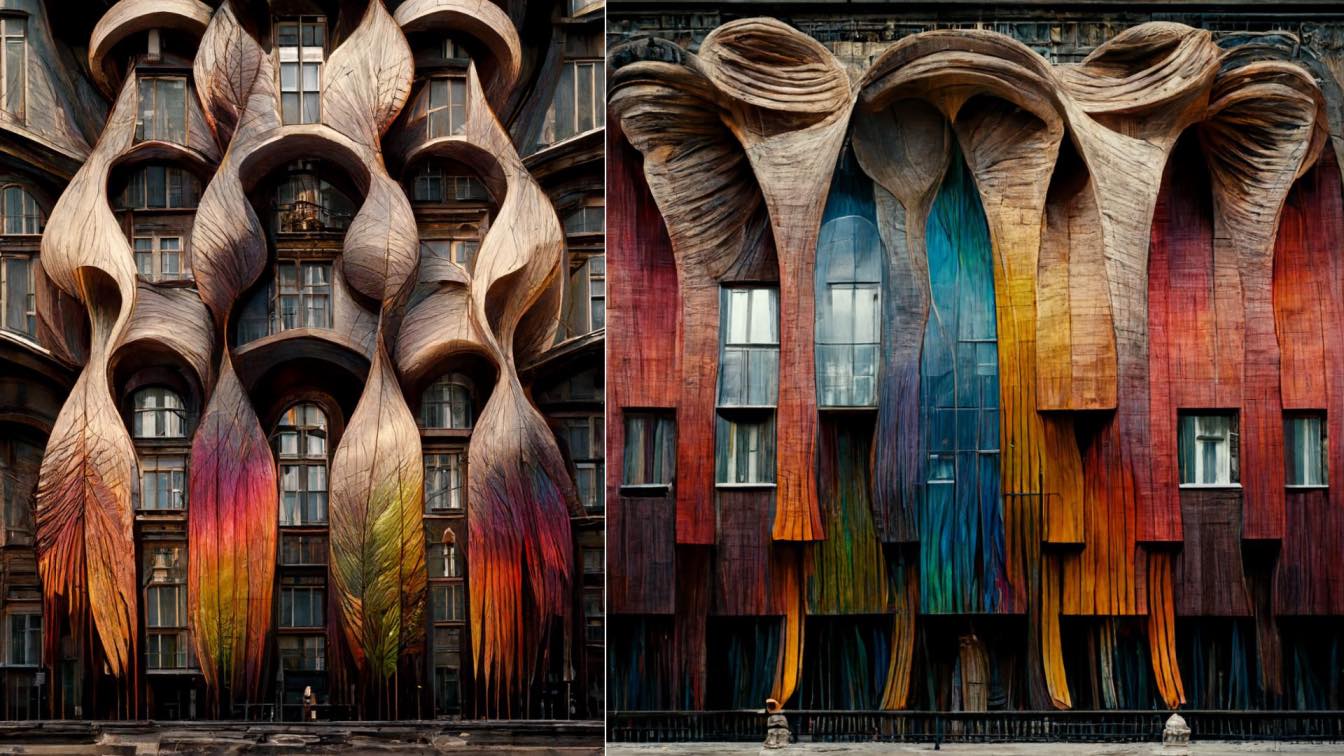Vincent Callebaut Architectures: In line with Land’Art, the Dunes project is at the heart of the North Sea landscape and locally uses the natural materials of this marine ecosystem.
Delicately located along the melancholy Belgian coast characterized by its long tides and its dunes covered with sand reeds, the project proposes the construction of a cluster of generously curved villas buried discreetly in the dunes, under tall grass and wildlife savage.
Wishing to link art and life, this project could be described as “Sandworks” and humbly placed in parallel with the “Earthworks” and “Environmental Arts” of contemporary American artists such as Robert Smithson & James Turrell.
These bio-inspired villas are designed in self-healing bio-concrete, made locally from mollusk shells (such as those of crayfish, mussels, oysters, clams or sea snails). Here the granular skeleton of traditional concrete is replaced by this aquatic waste of shellfish recycled and recovered as resources, thus enabling the possibility of setting up an efficient blue circular economy with low environmental impact.

The composition of this bio-concrete has been enriched with spores of bacteria and fungi which give it healing properties through bio-mineralization. The production of calcium carbonate by these micro-organisms brought into contact with water infiltrates any possible crack allowing the bio-concrete to self-heal for longer mechanical resistance and durability of the building.
The maternal curves of the villas are found in the interior designs and all the furniture is designed taking inspiration from the shapes and structures of the pebbles and shells present on the beach. For greater visual permeability between the inside and the outside, the furniture is also made of massive natural stones, mother-of-pearl and recycled algae fibers.
These dune-shaped villas are intended to be minimalist, invisible and stealthy, to better be forgotten by blending into the seascape and its spray.
